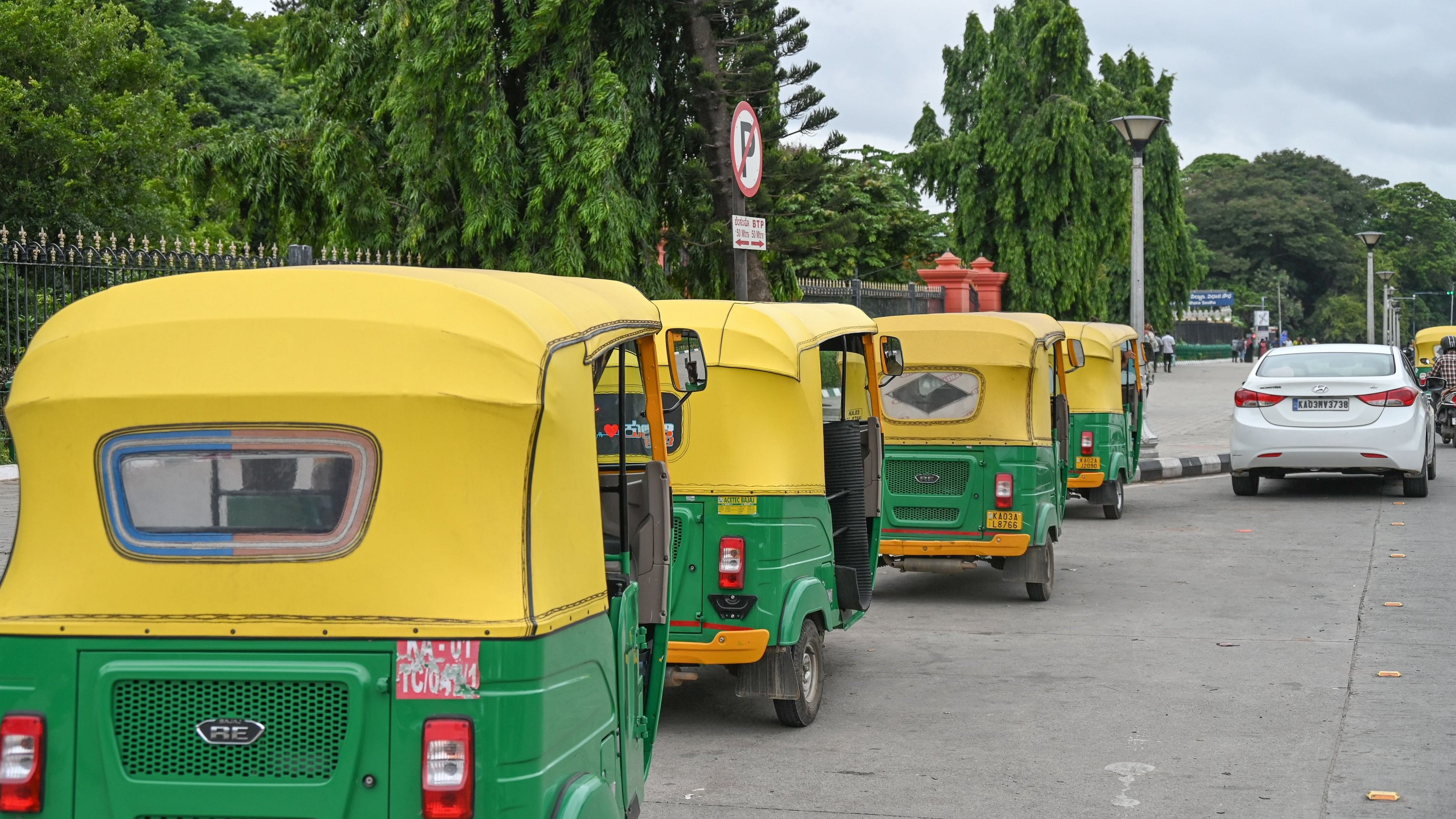
People told Metrolife that they started noticing the high fares a month ago.
Credit: DH Photo/ S K Dinesh
Bengalureans have noticed a 30 per cent-60 per cent hike in fares on ride-hailing apps in the past one month. This is the case across long and short commutes, with auto and cab rides. Rates during non-rush hours are equally steep, they say.
In February, the Karnataka transport department brought in a uniform kilometre-based fare system for all cabs. They also struck down surge pricing, flexi-fares and per-minute charges. Autos fall under a different fare structure (see box).
Uber and Rapido didn’t respond to Metrolife. Ola refused to comment. Tanveer Pasha, president of Ola Uber Driver’s and Owner’s Association, said ride aggregators aren’t following the ‘one city, one fare’ structure.
Namma Yatri said it hasn’t revised the prices. “As a community-driven open-mobility app, we don’t set the prices. We comply with fare structures. To compensate drivers for higher fuel consumption and extra travel time during rush hours, we apply a 20% congestion fee on an average on cabs. For autos, there is no congestion fee. Instead, we have allowed drivers to add Rs 20 to the base fare since the beginning,” says
Shan M S, cofounder of Moving Tech Innovation, parent company of Namma Yatri.
‘Can’t keep budget’
Bengalureans have dubbed the situation as ‘total anarchy’. Sridevi Padmanabhan uses Uber or Ola autos to travel from New Thippasandra to Defence Colony frequently. The distance is about 1.4 km. What would cost her Rs 35-Rs 40 until three weeks ago, now costs her Rs 67. “Citizens have no control on their commuting budget. The pricing system is so opaque,” says the counsellor.
Subhashini R is also paying Rs 30-40 more for her daily commutes via Rapido auto. This changed about three weeks ago. “I am considering buying a second-hand scooter,” says the Kasavanahalli resident.
Social science student Fardin Pasha would earlier book an auto from Jalahalli metro station to get home. This would cost him Rs 60-70. Now he waits for the bus to cover the last mile because the steep fares have “dented the monthly allowance” his parents give him. He recalls the turning point, “Last Monday, auto prices on all the apps were Rs 150.”
HSR Layout resident Saurabh Gupta is considering taking a bus to work. “It will cost me Rs 10 and I will also need to walk,” says the associate data scientist. It was about a month ago when he noticed the prices of Uber auto go from Rs 42-
Rs 45 to Rs 65-Rs 75.
Fathima (name changed) expressed her disappointment with Namma Yatri, which is positioned as a citizen-friendly app. It also allows riders to add a tip for drivers. “In the past three weeks, I have been spending Rs 30-40 more than the normal fare. That’s why I stopped tipping drivers. If they aren’t happy with the base fare, they should petition the government,” she says.
The high fares have also been discussed on a Reddit thread titled ‘What happened to Uber prices in Bangalore?’. The user who started the discussion seven days ago wrote that he travels to his office in an Uber sedan. The 9 km ride would cost him Rs 200-300 around 7 am a month ago. “Just woke up for my trip this morning and the Uber is a whopping Rs 630,” he posted.
‘Acting on their own’
Mobility expert Satya Arikutharam says ride aggregators are operating in a regulatory vacuum.
“The transport department is taking cover behind its own interpretation of a 2016 Karnataka High Court interim order, which restrained the state government from taking any coercive action against apps like Uber and Ola. It has not made these aggregators follow rules although the latter had given an undertaking in 2016 to not charge fares more than the maximum prescribed,” he explains.
Fare chart
Cabs: Fares vary depending on the purchase price of the cab.
For cabs under Rs 10 lakh, the base fare is Rs 100 for the first 4 km and Rs 24 for every subsequent km.
For the Rs 10-15 lakh category, the base fare is Rs 115 and Rs 28/km thereafter.
Cabs costing Rs 15 lakh and up can charge Rs 130 as base fare and Rs 32/km thereafter.
10% above the fare is allowed between 12 am and 4 am.
Autos: Rs 30 for the first 2 km and Rs 15 for every subsequent km. Convenience fee up to 5% and taxes applicable.
Transport official speaks
C T Murthy, additional commissioner of transport and secretary, Karnataka State Transport Authority, said they haven’t enforced the fare structure and are deliberating on how best to go about it. “We haven’t issued notices to ride-hailing firms yet,” he says.
He says commuters can flag high fares to the department’s control room. Dial 94498 63429/ 94498 63426 for south Karnataka, and
94498 63450/94498 63451 for north Karnataka between 10 am and 6 pm. Closed on Sundays and public holidays.